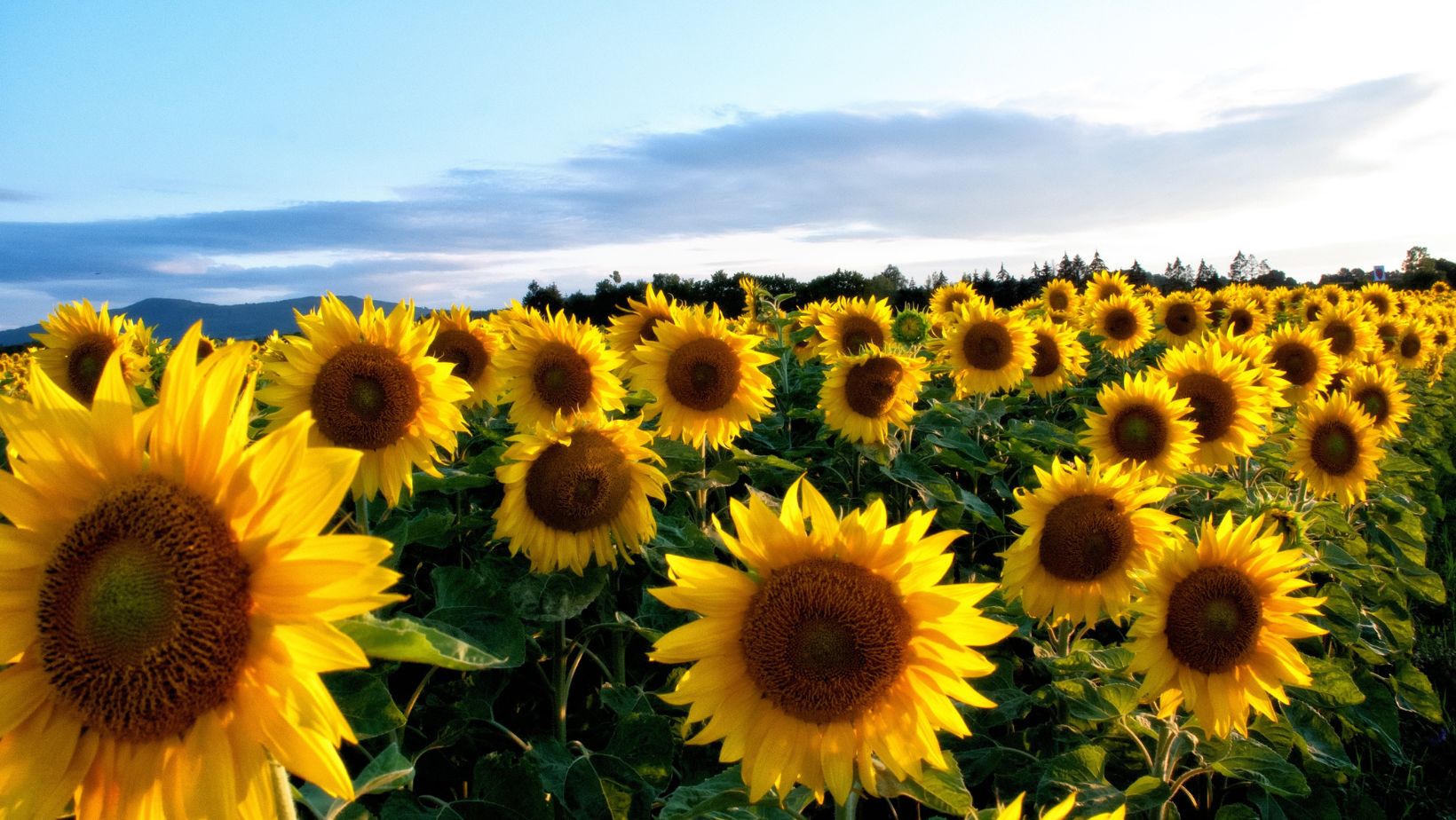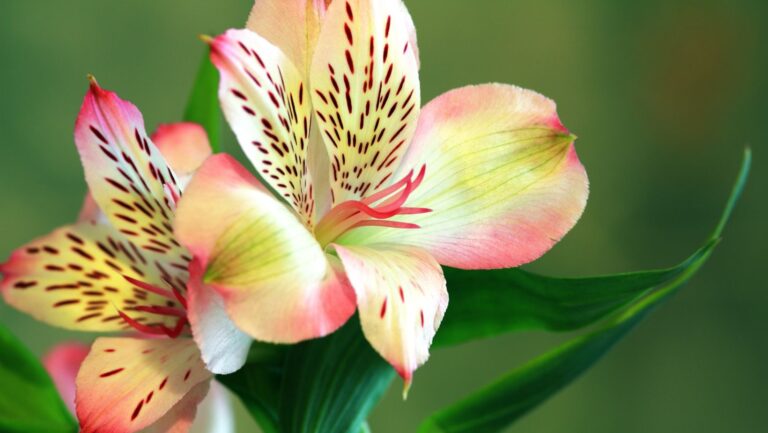Last Updated on July 24, 2023 by Deanne Robertson
In the rich tapestry of human communication, we find numerous channels—words, gestures, art, music, and even silence—that hold profound meaning. Among these many expressive forms, one that often goes unnoticed, is the silent but impactful language of flowers. For centuries, flowers have been potent symbols in various cultures, silently expressing a world of emotions, wishes, and hopes. This symbolic language, known as floriography, was particularly prevalent during the Victorian era when messages, especially those of a romantic nature, were frequently conveyed through a carefully curated bouquet of flowers.
In this blog post, we’ll unlock the enchanting hidden messages behind some of the most popular flowers.
Roses: Unveiling Deep Affection
The rose, undeniably the most iconic of all flowers, carries a myriad of meanings depending on its color. Red roses symbolize deep love and respect. Yellow roses, often used when you get vibrant birthday flower delivery, signify friendship and joy, while white roses speak of innocence and purity. On the other hand, the pink roses express gratitude and admiration. The subtleties of these messages truly reveal the rose’s versatile communicative power.
Lilies: Symbols of Purity and Elegance
Often used in religious and ceremonial contexts, the lily is considered a symbol of purity and refined beauty. While white lilies are typically associated with purity and virtue, oriental lilies symbolize eternal life, making them a popular choice for funerals. On the brighter side, orange lilies convey confidence, pride, and wealth, adding an extravagant touch to any bouquet.
Daisies: Embodying Innocence and New Beginnings
Daisies, with their white petals radiating from a yellow center, are the epitome of innocence and purity. These flowers are also associated with new beginnings and can often be found in bouquets celebrating births, graduations, and new ventures. They embody an uplifting spirit that can spark joy in any recipient.
Sunflowers: Radiating Positivity
Much like their namesake, sunflowers represent warmth, happiness, and positivity. Their bright yellow petals and towering stems mimic the sun’s joyful energy, making them a popular choice for those needing a mood booster.

Sunflowers are also associated with loyalty and longevity, reflecting enduring admiration and respect.
Tulips: Expressing Love and Comfort
Tulips, with their simple yet elegant form, hold a profound message of love. Red tulips are often used to express deep love, similar to red roses, while yellow tulips are symbolic of cheerful thoughts. White tulips stand for forgiveness, and purple tulips symbolize royalty. In a broader sense, tulips are seen as a token of comfort and warmth, making them a wonderful choice for various occasions.
Orchids: Signifying Love, Luxury, and Strength
Orchids, with their exotic and stunning appearance, symbolize love, luxury, beauty, and strength. In ancient Greece, they were associated with virility and male fertility, while the Victorians saw them as a symbol of luxury. Today, with their variety of shapes and colors, orchids carry messages of rare and delicate beauty.
Carnations: Representing Love and Fascination
Carnations, like roses, carry different meanings based on their colors. Overall, they are a symbol of love, fascination, and distinction. Red carnations convey deep love and admiration, while pink ones are associated with a mother’s undying love. Striped carnations stand for regret that a love cannot be shared, adding a touch of melancholic beauty to the flower’s symbolism.
Peonies: Symbolizing Prosperity and Romance
Peonies, with their lush, full blooms, symbolize prosperity, good fortune, and a happy marriage. They are often used in bridal bouquets for their connotations of romance and luxury. The peony is also associated with honor, and their springtime bloom makes them a popular choice for various celebrations.
Lavender: A Message of Devotion
Lavender, while not typically found in traditional bouquets, holds a powerful message of its own. Known for its calming scent, lavender is often associated with serenity, grace, and calmness. Furthermore, it represents devotion and undying love, adding depth to its seemingly simple symbolism.
Hydrangeas: Reflecting Heartfelt Emotions
Hydrangeas, with their full, round heads made up of smaller blossoms, symbolize heartfelt emotions. In the Victorian era, they were known to represent vanity due to their abundance of petals, but over time, their meaning has evolved.
Today, hydrangeas are more commonly associated with gratitude, grace, and beauty. Pink hydrangeas especially symbolize heartfelt emotion, making them a popular choice for expressing sincere apologies or deep understanding.
Forget-Me-Nots: Pledging True Love
With their bright blue hue and delicate form, forget-me-nots are true to their name, symbolizing remembrance and true love. These small flowers are often used to express faithful love and enduring memories, making them a poignant choice for memorials or anniversaries. The forget-me-not’s message is a gentle reminder of the bonds that persist through time, a testament to love’s enduring nature.
Iris: Emanating Wisdom and Hope
The iris, with its vibrant, ornate petals, is often associated with wisdom, hope, and trust. In ancient Greece, the goddess Iris was believed to use the rainbow as a bridge between heaven and earth, reinforcing the flower’s symbolism. Blue and purple irises are commonly used to symbolize faith and hope, while yellow irises stand for passion. White irises, on the other hand, convey purity.
Chrysanthemums: Celebrating Life and Rebirth
In many cultures, chrysanthemums carry a strong association with death and are often used in funerals or to honor the deceased.
However, they also symbolize life and rebirth. In Japan, they’re a symbol of the sun and the perfection of life, and the “Festival of Happiness” in Japan celebrates this flower. Red chrysanthemums symbolize love, while yellow ones stand for slighted love. Their wide range of colors and varieties make them suitable for almost any occasion.
Violets: Expressing Modesty and Loyalty
Finally, let’s explore violets, flowers long associated with modesty, spiritual wisdom, and humility due to their low-growing nature. Violets also symbolize loyalty and devotion, often used to express the sentiment ‘I’ll always be there for you’. Purple violets convey the message of love and admiration subtly, while white violets speak of innocence and purity.
Conclusion
Deciphering the language of flowers offers a window into a world of subtle and nuanced expression. Each flower, in its beauty and fragility, communicates powerful emotions and sentiments that words sometimes cannot capture.
Whether you’re planning to get a vibrant birthday flower delivery or wish to express your deepest emotions, understanding the hidden messages within each bloom can make your floral gifts all the more meaningful. As we become fluent in this language, we gain a richer appreciation for the natural world’s beauty and the intricate ways it intertwines with human emotion and communication.





